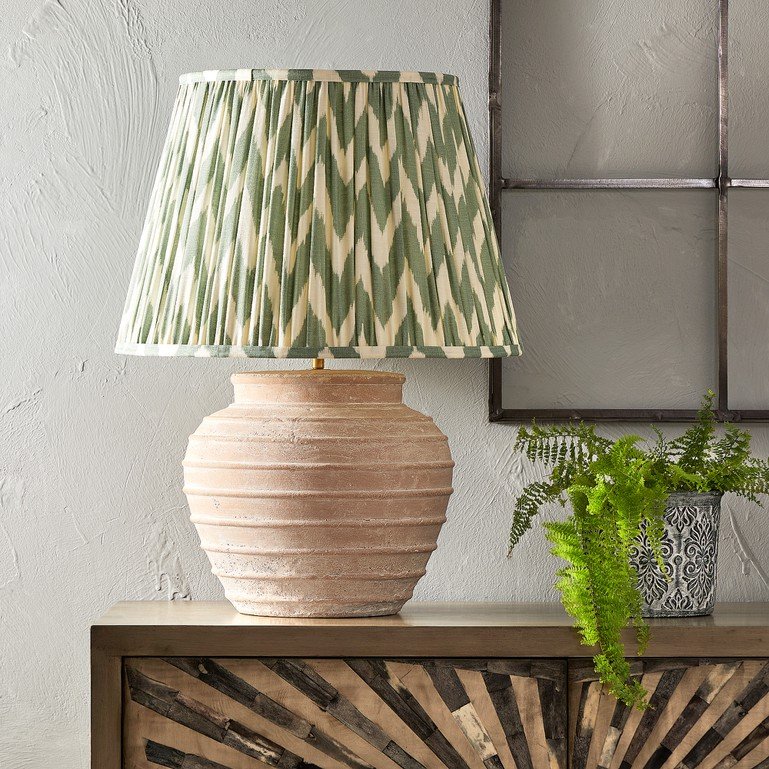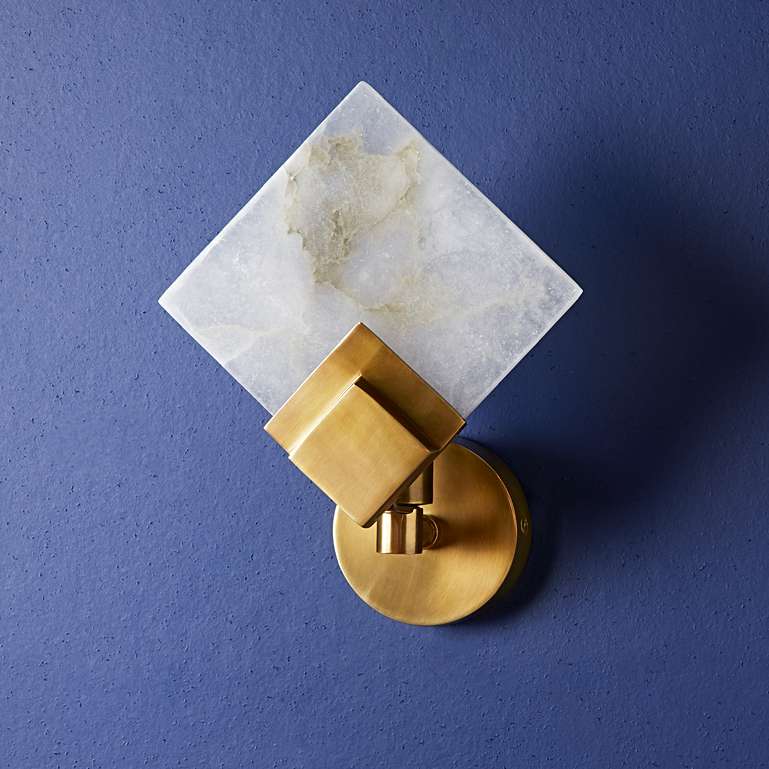 How did we get from ancient oil lamps to rechargeable modernist desk lights? Here’s Pooky’s guide to two thousand years of interior lighting – and what it tells us about humans and their homes…
How did we get from ancient oil lamps to rechargeable modernist desk lights? Here’s Pooky’s guide to two thousand years of interior lighting – and what it tells us about humans and their homes…
The story of home lighting is one of brilliant human ingenuity, stretching through the millennia and interwoven with technological advances and major lifestyle changes. Lighting underpins how we live and work, so the history of lamps tells us a lot about ourselves and how we shaped our world.
At Pooky we love to make new and exciting things (such as rechargeable lamps), but we also know that many of our lamps and shades have deep historical roots. So, although there are many ways to tell the story of how humans escaped the tyranny of daylight hours and made it ever cheaper and easier to light our rooms – here’s our distinctly Pooky-ish version.
Talk a walk with us through the Eight Ages of Home Lighting…
I: The Age of Oil Lamps
Going back to the start, we have to look at what our earliest ancestors—homo erectus, who preceded homo sapiens in the human evolutionary chain—were doing, when things were decidedly simple. It was natural light during the day and, once those ancestors had discovered how to make and use fire, it was firelight at night. To put things into chronological perspective, and depending on which scientific viewpoint you prefer, this was anywhere between one million and two million years ago.

Taking a giant leap timewise, we spring forward to the ancient civilisations of Egypt, Greece and Rome, which saw more sophisticated ways of using open flames, via torches, the construction of fireplaces and…oil lamps, made of bronze, stone or terracotta clay. Terracotta oil lamps were frequently decorated—the Romans were particularly keen on a touch of erotica—and remained, along with torches, the main type of home lighting for hundreds of years.
While you won’t find any oil lamps among Pooky’s range, we still use materials employed by those ancient civilisations. For example, our terracotta Ambrose table lamp, which also echoes the simple type of shape favoured by potters for thousands of years.

II: The Age of Candlelight

The Middle Ages covered a period of about 1,000 years, from 500 AD onwards and, in home lighting terms, that brings us to… candles. For most people, this would mean tallow (animal fat) or, for those with deeper pockets, beeswax candles. The portability of candles and the use of candleholders, from simple to ornate, meant that people could begin to think about lighting aesthetics; they could experiment with diffusing light by using reflective surfaces, and by using different sizes of candles and moving them around—an early approach to strategic lighting placement.
Despite the technological development of lighting since then, at Pooky we still love the soft light of candles and the atmosphere that candlelight creates. We have some fabulous candle holders in our collection including wall-hung styles (for reflective surfaces), and a thoroughly modern twist on the traditional in the shape of our Mildred candlestick, finished in polished lacquer in a range of vibrant colours, such as lime, hot chilli, and turquoise.

III: The Age of Fancy Chandeliers
Chandeliers of a kind had been around since the later Middle Ages but, like the 11th century Azelin chandelier in Hildesheim Cathedral mainly in larger churches and cathedrals. The rise of merchant and banking families across Europe during the Renaissance went hand in hand with a substantial leap in home lighting and the demand for ornate chandeliers.

One of the most famous must be the brass chandelier in Van Eyck’s Arnolfini Portrait (1434) (detail above, and full picture top), which depicts an Italian merchant and his wife in their home. It is a painting that heaves with symbolism; at one level, an overall display of substance and affluence, but with subtle details too. These include the chandelier lit by a single candle, which stands for both the unity of the couple and the all-seeing eye of God.
Pooky has chandeliers to suit all tastes, such as the Hestia, which pairs pure brass with handmade glass rods—as sleek and streamlined as a spaceship, but with a shape that echoes back through the centuries, which makes it surprisingly versatile.

IV: The Age of Shades
Lampshades made their first appearance in the 17th century and were particularly popular in France. They were usually made of parchment or thin fabric, designed to shield eyes from direct glare by diffusing light. Newspaper magnate, William Randolph Hearst, would follow suit in the early 20th century at Hearst Castle, but using historic parchment manuscripts to make lampshades probably wasn’t the best idea. A century on, Hearst’s shades still provoke outrage!

At the same time, oil lamps, which became more common in the 18th century, were now topped with glass or metal shades, so that they too could focus light downwards.
At Pooky, we have an exceptionally large range of glass shades; you’ll find clear glass, opaline glass, bubble glass, waffle glass, prismatic glass, frosted glass and glass in all manner of stunning colours, like our violet glass Lisboa.

V: The Age of Silk and Gaslight
We now move to another major lighting revolution: the arrival of gas lights in the late 18th and early 19th centuries. Much brighter than candles or oil lamps, gas lamps were soon appearing in homes, streets, and public buildings. And the gas lamp revolution led to something of a lampshade revolution, with glass globes or shades protecting the flame and acting as light diffusers.
At the same time, oil lamps were switched to kerosene, which was seen as a safer and more reliable lighting source.

By the mid-19th century, decorative lampshades were becoming increasingly popular. Those who could afford them opted for materials like silk and lace, and shades often featured the intricate designs and embellishments beloved by the Victorians.
We are rather partial to silk at Pooky, Dupion silk—the grandest of all, in particular. It is natural, organic and utterly beautiful, with its distinctive slubs. It also holds colours superbly; just take a look at our short drum lampshade in fuschia Dupion silk. Utterly gorgeous...

VI: The Age of Edison’s Lightbulb

By this time, technological advances were coming on apace. Thomas Edison’s invention of the electric light bulb in 1879 would change home lighting forever. Its revolutionary instant, bright light sounded the death knell for gas and kerosene lamps. Half a century later, fluorescent lighting started to appear, although mainly in commercial and industrial buildings. The brightness and efficiency of fluorescent lighting did make it popular for domestic kitchens, however.
Two art and design movements of this period had a major influence on lampshade design: the natural forms and motifs of Art Nouveau, followed by the geometric shapes and strong colours that typified Art Deco. Some of the most famous lamps of the 19th century were created by Louis Comfort Tiffany. Renowned for their stained glass and intricate, colourful designs, the first of many Tiffany lamps appeared in 1893; this instantly recognisable style has been copied and adapted around the world ever since.
If you are a lover of all things Art Deco, you won’t b able to resist our brass and alabaster Gatsby wall sconce. We worked hard to achieve that ideal Deco marriage of geometry and glamour—and we were rather pleased with the result.

VII: The Age of Design
As the 20th century progressed, a shift was taking place in people’s design preferences — Modernism had taken hold and its influence could be seen in all aspects of interior design, including lampshades and lighting. It was a case of out with the ornate and in with the streamlined and functional; lampshades began to be made of modern materials like fibreglass, metal and plastic and styles became simpler. And this shift in taste and the use of new materials supported mass production, with designer lighting and lampshades becoming more affordable and widely available.
We’re big fans of the Mid-Century Modern look at Pooky; for example, our Bow Tie Desk light, shown here in black.

VIII: The Age of Rechargeable Lamps
From the latter part of the 20th century to today we’ve seen further technological advances, including halogen lamps, compact fluorescent lamps and, in particular, light emitting diodes (LEDs), which, with their energy efficiency, long life and versatility, rapidly became the lighting standard. And now we have smart lighting systems that can be controlled via smartphones, voice commands, and home automation systems.
But most exciting of all, we believe is the great leap forward in rechargeable lamp technology. Cordless lighting means that you can put almost any kind of affordable, beautiful light anywhere - from wall lights to table lamps - with no need for complicated wiring or electricians.

It's the first truly transformative thing in home lighting since Edison invented the light bulb...Welcome to the Rechargeables Revolution!
See all our rechargeable table lamps, wall lights, picture lights and more here.
See also:
The rechargeables revolution: 5 ways that beautiful cordless lights can transform your home life
Chandeliers – an illustrated history
... and lots of interesting things about lighting and interior design on the Pooky blog.










